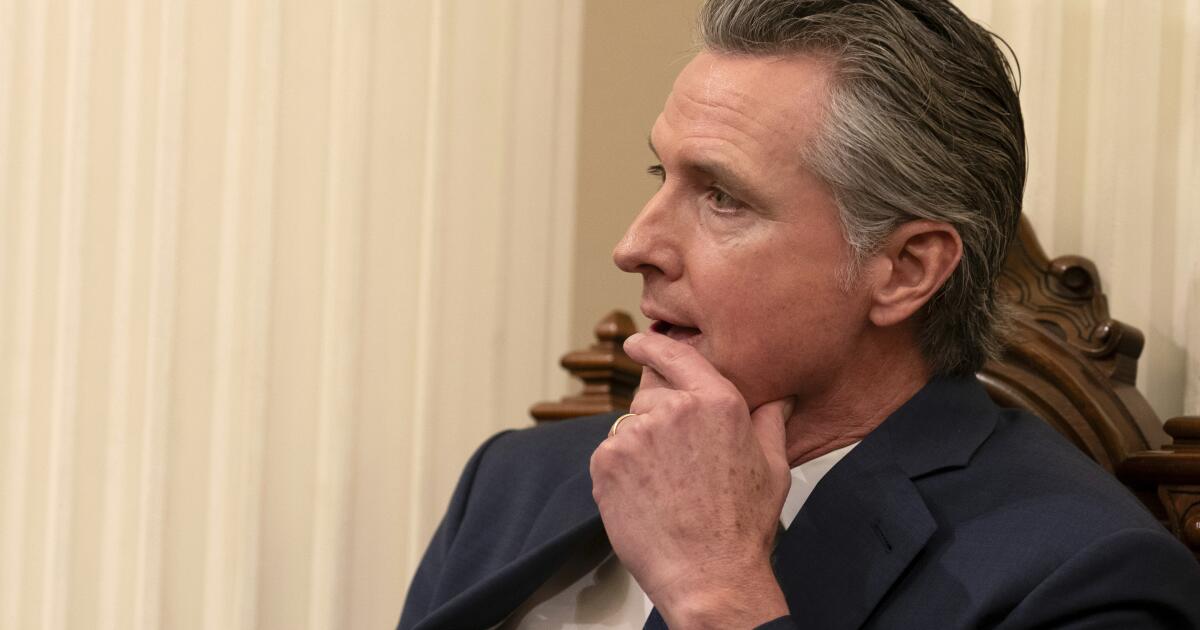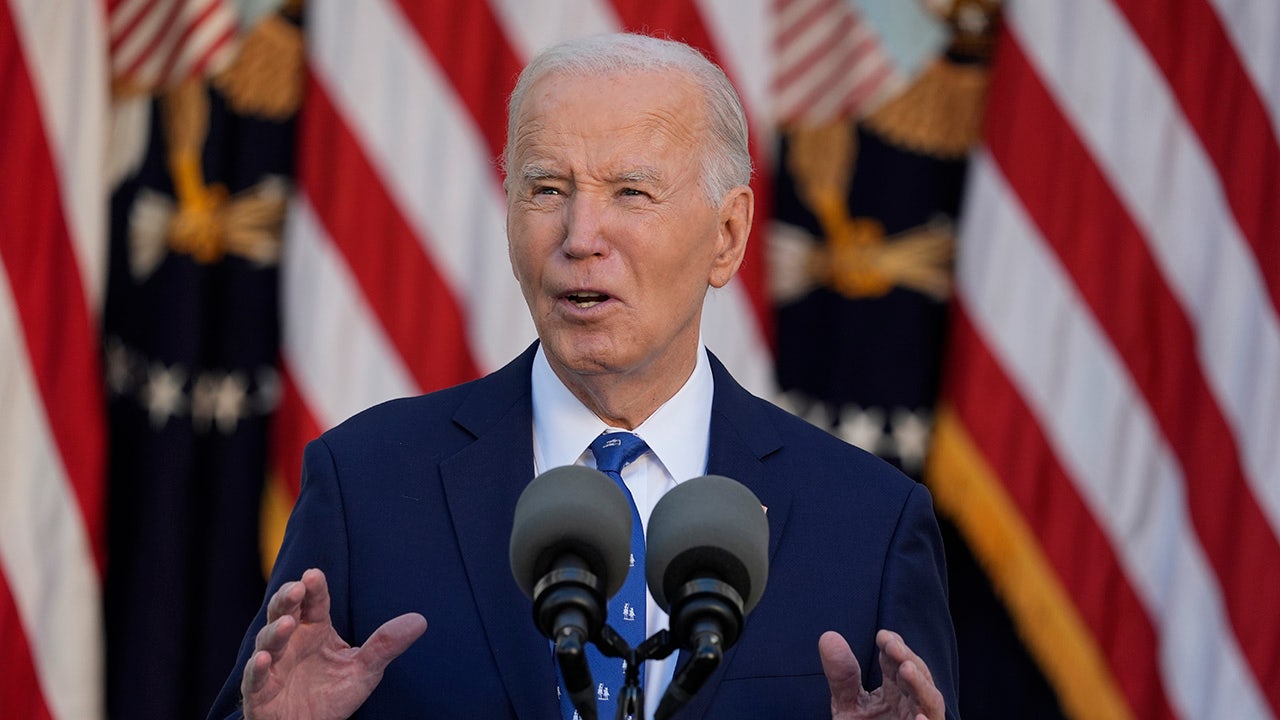West
Ted Bundy 50 years later: How investigators took down infamous serial killer who terrorized country for years
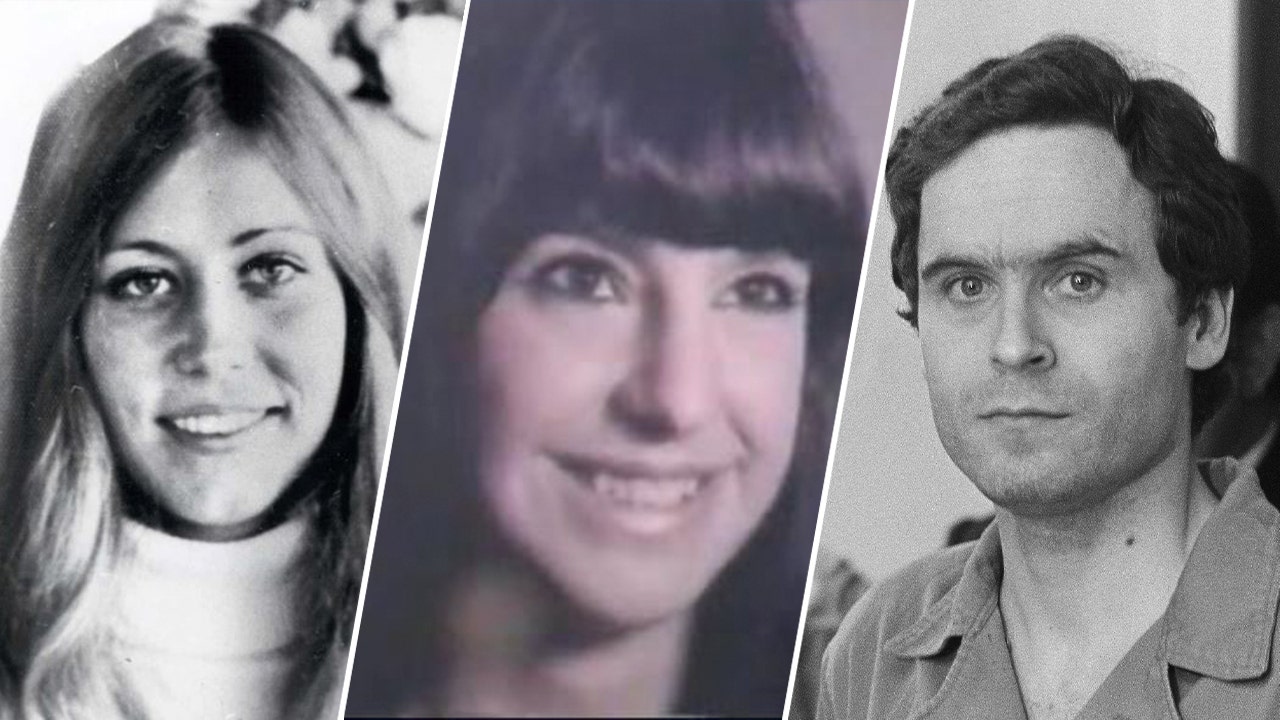
Sunday marks 50 years since Ted Bundy, one of America’s most infamous serial killers, abducted two young women on the same day from the same crowded Washington state beach.
Although it was not the first time Bundy struck twice in one day, snatching the two women in a four-hour timeframe was among the most brazen acts of his years-long cross-country crime spree.
Although Bundy confessed to 28 murders, some estimate that he was responsible for the deaths of hundreds of women between 1974 and 1978.
TED BUNDY SURVIVOR REVEALS WHAT SAVED HER FROM SERIAL KILLER’S SORORITY-HOUSE RAMPAGE
Ted Bundy, pictured during his 1979 murder trial at the Miami-Dade County Metro Justice Building, killed at least 28 women and girls between 1974 and 1978. (Getty Images)
Janice Ann Ott, 23, and Denise Marie Naslund, 19, both disappeared from Lake Sammamish State Park, about 15 miles from Seattle, on July 14, 1974.
Bundy killed both women that day, The Seattle Times reported, but their bodies weren’t discovered for another two months.
FOLLOW THE FOX TRUE CRIME TEAM ON X
Bundy approached various women at the park, asking them to help him unhook his boat from his tan Volkswagen bug. Four female witnesses would later describe an attractive man wearing a white tennis outfit with his left arm in a sling who spoke in a slight, possibly Canadian accent and was overheard introducing himself as “Ted.”
Three of the women refused; a fourth accompanied Bundy to his car, then ran after seeing that there was no sailboat.
TED BUNDY’S EX-GIRLFRIEND RECALLS HORRIFYING ENCOUNTER WITH THE SERIAL KILLER: ‘HE JUST LAUGHED’
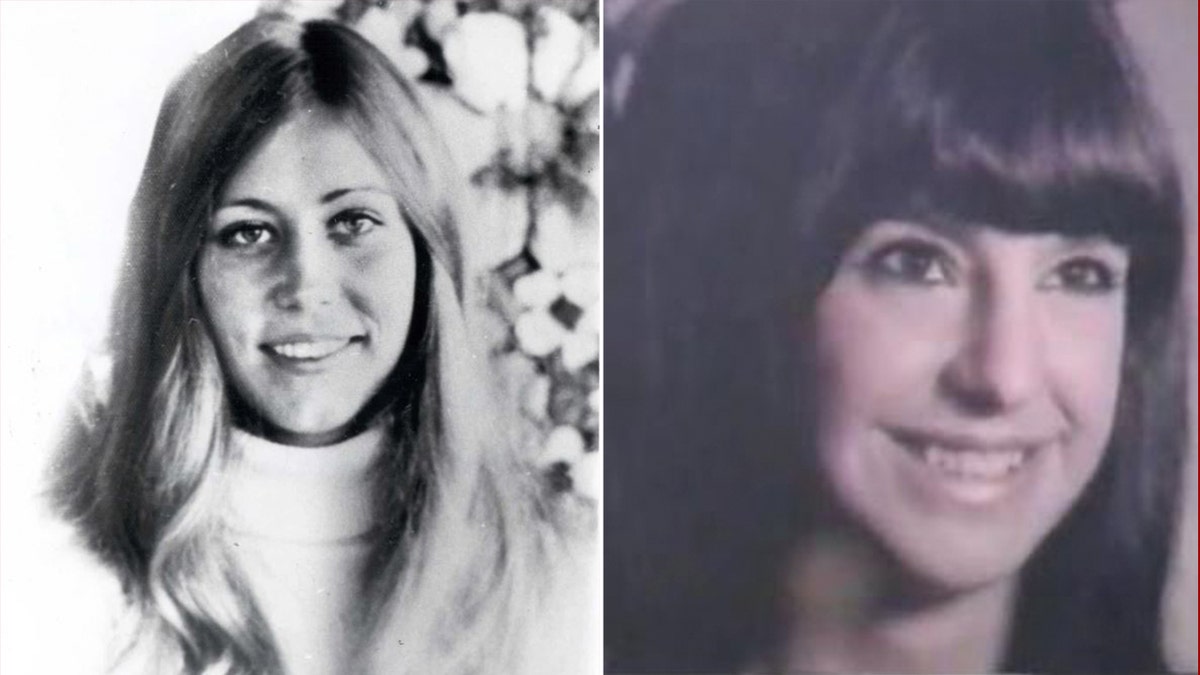
Denise Naslund, right, was abducted by Ted Bundy four hours after Janice Ott, left, on July 17, 1974. Skeletal remains of both women were found about two miles away on Sept. 6 of that year. (Kings County Sheriff’s Department)
Ott, a juvenile caseworker at the nearby King County Juvenile Court, was seen by three witnesses leaving the park’s beach with the man. Before she left her home on her yellow bicycle that day, Ott put a note on her door to tell her roommate that she was going sunbathing, drawing a doodle of the sun on her note, according to Friends of Lake Sammamish State Park. Her husband, James, was in California attending medical school.
SIGN UP TO GET TRUE CRIME NEWSLETTER
Naslund, who was studying to become a computer programmer, never returned from the restroom on a picnic with her boyfriend and another couple. Her mother would tell The Seattle Times that Naslund had the sort of helpful nature that could place her in danger.
King County police distributed a composite sketch based on descriptions of the man and his car, which was printed in area newspapers and broadcast on local television stations.
‘PARALLELS OF EVIL’: TED BUNDY SURVIVORS SPEAK OUT, LINKING THEIR GRUESOME ATTACKS TO BRYAN KOHBERGER’S
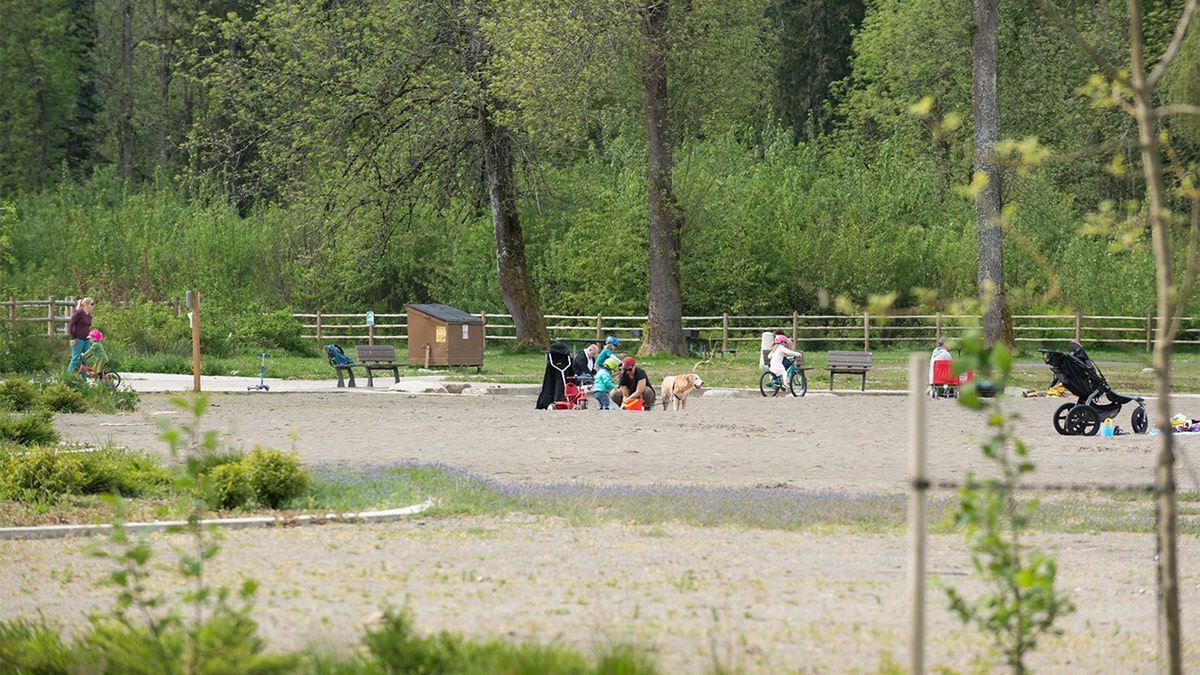
Ott and Naslund were lured off the crowded beach at Lake Sammamish State Park by Bundy, who wore a sling on his arm and claimed he needed help unhooking his sailboat from the trailer hitch of his vehicle. The park is pictured in 2020. (Chona Kasinger/Bloomberg via Getty Images)
Bundy’s girlfriend Elizabeth Kloepfer, his friend Ann Rule and one of Bundy’s psychology professors from the University of Washington all recognized the composite and contacted police, according to King County Detective Robert Keppel’s book, “The Riverman: Ted Bundy and I Hunt for the Green River Killer.” But at the time, Rule wrote in her own book, detectives thought it was unlikely that the clean-cut law student was their suspect.
GET REAL TIME UPDATES DIRECTLY ON THE TRUE CRIME HUB
Based on the description of the vehicle and the suspect, Keppel pored over thousands of automobile registration documents, The Seattle Times reported. Bundy was on the final list of potential suspects.
On Sept. 6 of that year, grouse hunters found skeletal remains near a service road in Issaquah, about two miles away – dental records showed that most of them belonged to Ott and Naslund, The Bulletin reported at the time.
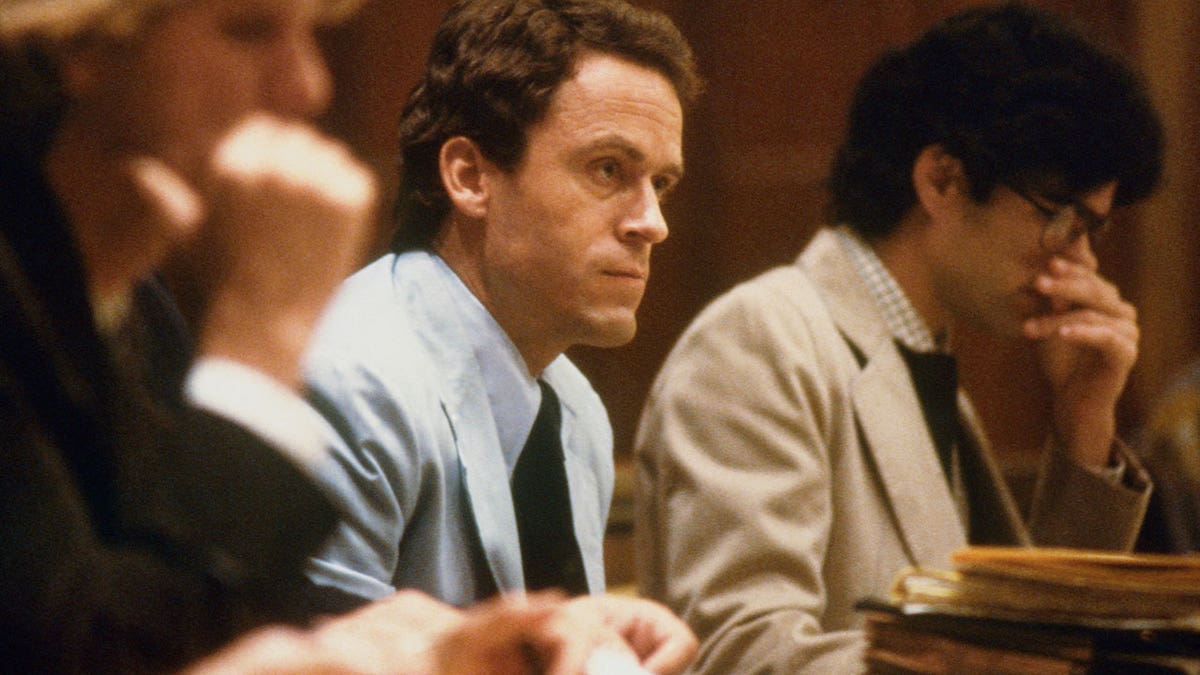
Bundy was put to death on Jan. 24, 1989, at Florida State Prison. (Bettmann via Getty Images)
Bundy later identified an extra femur and vertebrae found at that scene as those of Georgann Hawkins, an 18-year-old University of Washington student who went missing in the early hours of June 11 of that year while walking from her boyfriend’s dormitory to her own, Keppel wrote.
Bundy later told journalist Stephen Michaud and FBI agent William Hagmaier that Ott was still alive when he kidnapped Naslund, and that he forced one woman to watch while he assaulted, then murdered the other. He later recanted that claim, along with others, in an interview on the night of his execution in 1989.
Before his capture, Bundy struck twice in one day once more on Nov. 8, 1974, first posing as a police officer and luring 18-year-old Carol DaRonch to his tan Volkswagen Beetle from a mall in Bountiful, Utah.
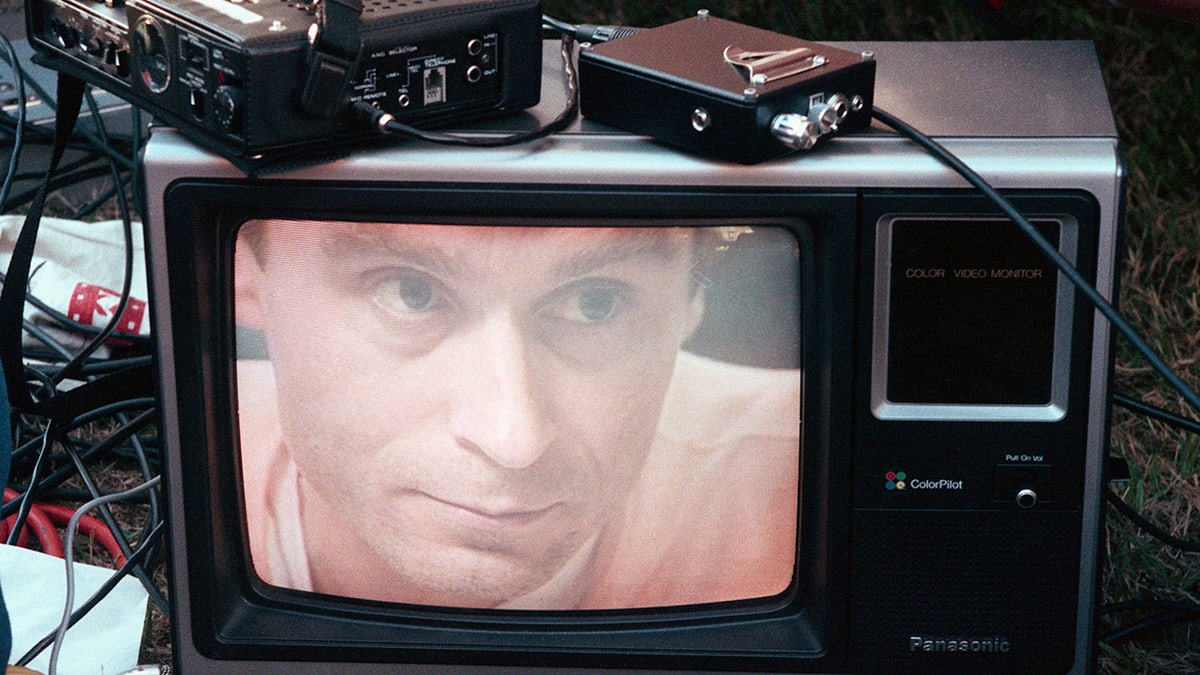
Ted Bundy’s image on a television screen on the lawn of the Florida State Prison. (Getty Images)
Bundy attempted to snap handcuffs onto the teen, but DaRonch was able to escape. A key that fit the lock to those cuffs was found in a high school parking lot where 17-year-old Debra Kent was last seen leaving a high school play to pick up her younger brother.
In 2015, a patella bone found in 1989 at the site where Bundy told investigators he’d left Kent’s body was positively identified as the teen, Wired reported. After 40 years, her family finally got closure and a death certificate.
On Aug. 18, 1975, Highway Patrol Sgt. Bob Hayward stopped Bundy’s tan Volkswagen, which was lingering outside a home in Granger, Utah.
After finding a ski mask, a crowbar, an ice pick and handcuffs in the car, the officer placed Bundy under arrest – but he was soon released.
In October of that year, DaRonch and two other women pointed Bundy out in a police lineup, leading to his arrest on attempted kidnapping charges, according to the Los Angeles Times. He was convicted of aggravated kidnapping in March 1976, The Deseret News reported at the time.
In October of the next year, while Bundy was serving that prison sentence, investigators were able to link Bundy to the January 1975 disappearance of Caryn Eileen Campbell with the discovery of her hair in his Volkswagen, The New York Times reported.
Campbell, a 23-year-old registered nurse, was last seen walking down a well-lit hallway between the elevator and her room at a Colorado hotel in January of that year; her nude body was found a month later next to a dirt road just outside the resort.
After he was charged with first-degree murder in Campbell’s death, Bundy infamously escaped a law library at Aspen’s Pitkin County Courthouse in June 1977, leading police on a six-day manhunt before his capture, ABC reported. He would escape a second time after losing enough weight to slip through a ceiling duct in his Colorado prison cell.
Before he was captured for good, Bundy killed two Florida State University sorority sisters and injured three more in January 1978, then killed 12-year-old Kimberly Leach.
Bundy was apprehended in February 1978, and his nationally televised trial began in June 1979. He was convicted in the deaths of the Florida State students on July 24, 1979, then for Leach’s death in January 1980.
Bundy was put to death on Jan. 24, 1989 at Florida State Prison – the declaration of the killer’s death at 7:16 a.m. drew cheers from the estimated 200 people in attendance, the Times reported.
Read the full article from Here

West
Pepperdine University cross survives Franklin Fire: ‘Grateful to God’
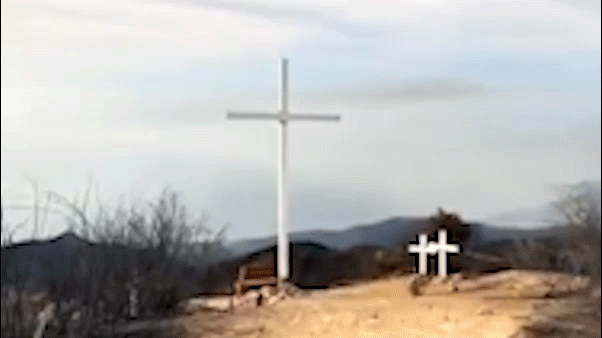
A cross overlooking Pepperdine University miraculously withstood a wildfire that came dangerously close to the Malibu, California, campus and forced students to shelter in place earlier this week.
A video shared by the campus on Wednesday shows a discernible hiking trail leading up to the unscathed cross surrounded by scorched dirt and vegetation.
The school shared an unattributed quote from someone who said they became “teary-eyed” and “grateful to God” as they moved closer to the cross.
The cross sits at the top of a hiking trail that extends three miles into the Santa Monica Mountains.
MALIBU WILDFIRE FORCES CELEBRITIES TO FLEE LUXURY HOMES AS DEVASTATION SPREADS
A cross sitting atop the Santa Monica Mountains overlooking the campus of Pepperdine University in Malibu, California. (Pepperdine University)
The original cross burned down during the Woolsey Fire in 2018. The current 20-foot cross was placed there by the brothers of the Sigma Chi fraternity, the school said in a blog post.
In the meantime, firefighters are continuing to battle the blaze – dubbed the Franklin Fire – which was only 20% contained on Thursday.
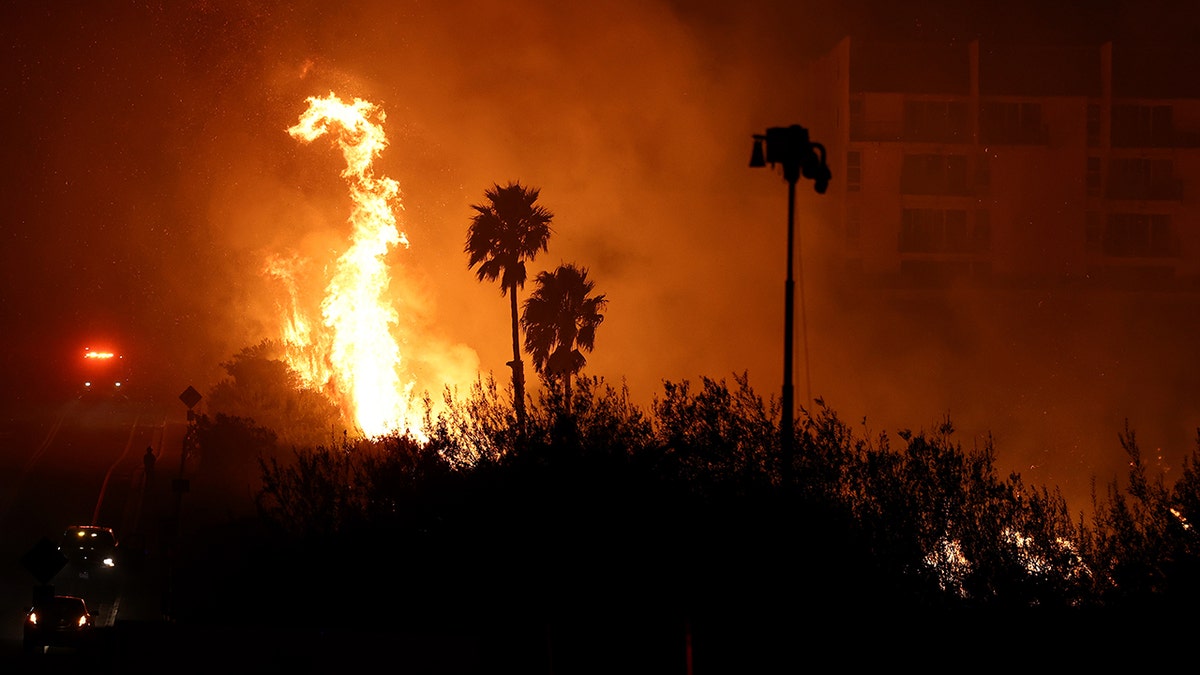
The Franklin Fire rages through the upscale city of Malibu. (Mario Tama/Getty Images)
The flames were fed by powerful winds that swept through the region at the beginning of the week, making it difficult for firefighters to control the flames.
FIREFIGHTERS STRUGGLE TO CONTAIN FAST-MOVING MALIBU WILDFIRE, PROMPTING EVACUATION ORDERS
The weather improved so much on Wednesday that meteorologists discontinued all red flag warnings, which indicate high fire danger, and crews were able to successfully push back against the flames.
The city, which is about 45 miles north of Los Angeles, is known for its rugged canyons, stunning bluffs and celebrities’ seaside mansions.
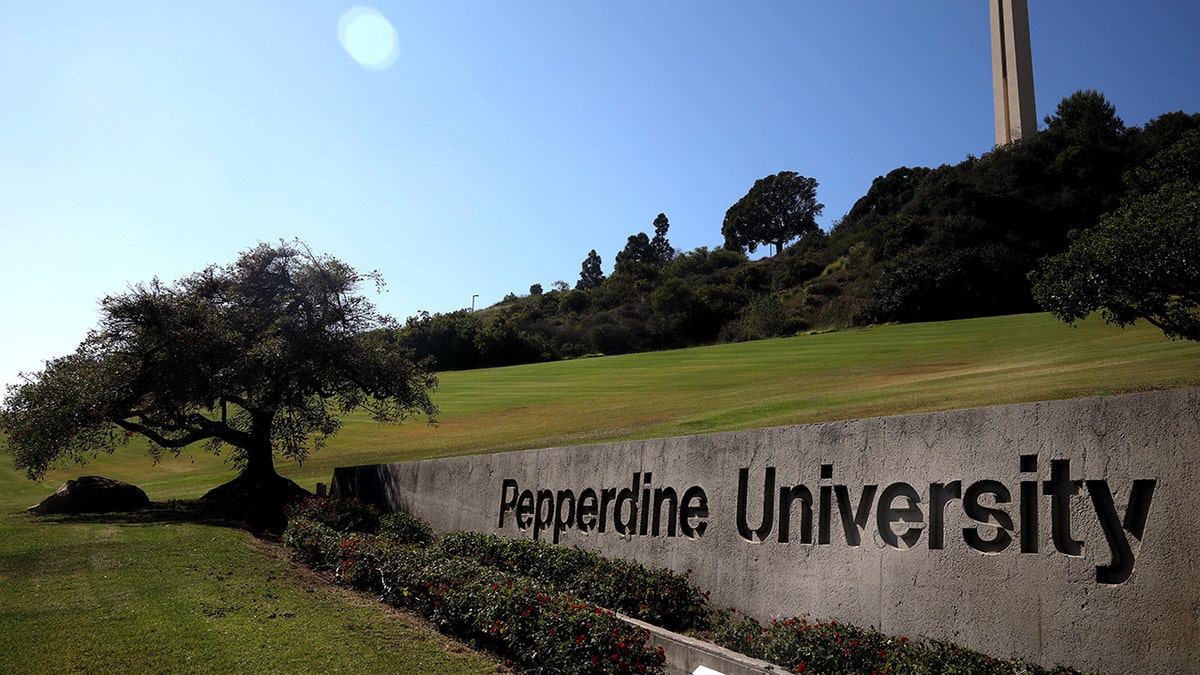
The Franklin Fire caused a shelter-in-place order at Pepperdine University in Malibu as flames surrounded the campus. (Genaro Molina / Los Angeles Times via Getty Images)
More than 3,700 Malibu residents have been allowed to return to their homes, but another 1,600 people with homes in the city remained under evacuation orders. A
ll told, some 20,000 residents in the city and neighboring areas have been affected by mandatory evacuation orders and warnings since the fire broke out late Monday.

The Franklin Fire rages through Malibu. (Mario Tama/Getty Images)
The evacuation orders impacted many celebrities who live in the city, including Cher, Jane Seymour and Dick Van Dyke, among others.
Early analysis shows little to no damage to structures at Pepperdine University. Final exams were postponed or canceled, and faculty members were determining how best to complete the semester, which ends this week.
The Associated Press contributed to this report.
Read the full article from Here
San Francisco, CA
Tornado: Why did San Francisco get a warning, but not Scotts Valley?

On Saturday, as a powerful winter storm headed toward the Bay Area, San Francisco residents received a tornado warning from the National Weather Service. But no tornado touched down. Yet 50 miles to the south, Scotts Valley, in Santa Cruz County, didn’t receive a tornado warning and a tornado did hit the community, flipping seven cars, breaking trees and causing five injuries.
What happened?
Despite computer models, radar systems and modern satellites, the event highlighted how predicting the precise location of extreme weather events still can be difficult, experts said Monday.
Officials from the National Weather Service said conditions in San Francisco and Santa Cruz County were very similar Saturday. The storms came from the same system. Radar images showed similar patterns. And the winds turned out to be similar — with gusts to 80 mph toppling trees at Golden Gate Park in San Francisco and the tornado in Scotts Valley later in the day reaching 90 mph.
The tornado never touched down in San Francisco. But the conditions in the atmosphere with wind speed and direction were right, said Brian Garcia, warning coordination meteorologist for National Weather Service in the Bay Area.
“San Francisco got lucky,” he said.
The National Weather Service issued a tornado warning for San Francisco at 5:51 a.m. Saturday, the first in its history.
Tornadoes are rare but not unheard of in California. Since 1950, there have been 482, according to federal records. The Central Valley receives more than other areas. The Bay Area’s most recent was in 2016, when a waterspout appeared during a storm over Lake Berryessa in Napa County. The East Bay had one in Brentwood in 2010. Gilroy had one in 2007.
Santa Cruz County has had 7 in the past 75 years: The most recent occurred Jan. 6, 2019, when one tore much of the roof off the Dolphin Restaurant at the end of the Santa Cruz Wharf before dissipating. Often they form just a few miles offshore as waterspouts, giving little warning.
“These things have very short life spans,” said Jan Null, a meteorologist with Golden Gate Weather Services in Half Moon Bay. “It’s not like you can track it for hours. That makes them very tough to warn people about.”
Tornadoes are less likely to occur in mountainous areas like Santa Cruz County, than in flat areas, because mountains often break up the swirling wind patterns. Given that, and seeing no tornado touch down in San Francisco, Garcia said, the National Weather Service issued a severe thunderstorm warning for Scotts Valley and much of Santa Cruz County instead of a tornado warning at 1:25 p.m. as the storm’s impacts moved south.

“A severe thunderstorm warning and a tornado warning both have similar calls to action,” he said. “Seek shelter immediately. Severe thunderstorms can have winds as strong as tornadoes. The difference is they are in a straight line rather than spinning.”
Another difference is the type of notification the public receives.
Under federal rules established in 2012, the National Weather Service sends alerts to cell phones of people living in the affected area when there are tornado warnings, along with other threats like hurricanes or tsunamis.
But in 2021 after getting complaints of too many cell phone alerts from residents in the Midwest where such storms are more common, the agency decided to only send them for the most extreme types of severe thunderstorms. There are three levels, and the agency’s meteorologists determined that Saturday’s storm looked like the lowest of the three.
As a result, 1 million people in San Francisco had an alert from the federal Weather Emergency Alert service buzz their phones Saturday morning. Nobody in Scotts Valley did, although some people reported phone warnings which likely came from weather apps and other programs.

“We had a front-row seat,” said Denise Fritsch, a saleswoman at Home by Zinnia’s decor store on Mount Hermon Road next to Target, where the damage was worst. “Our doors were sucked open, then slammed shut really quick. The wreaths went sailing.”
A few blocks away, the funnel cloud hit her husband’s car, breaking a window, mirror and tail light but leaving him unhurt, Fritsch said.
“If anybody knew it was coming they should’ve warned us,” she said, “but I don’t know if anyone knew what was coming.”
Bellina Jones, 21, a shift lead at The Penny Ice Creamery nearby, got wind warnings on her phone. She was in the back of the shop washing a blender and came to the front as a customer said, “Tornado, get down!” Jones said she would have liked to receive a tornado warning on her phone, but noted the incident was very unusual.
“I get why nobody would think to do that here,” she added.

Power was back on Sunday, and by late Monday all 15 traffic lights that had been blown down were expected to be back up, said Scotts Valley Vice Mayor Derek Timm. The main damage was to Scotts Valley Middle School where a fallen tree wrecked several classrooms, he said.
“There’s still branches down, trees snapped off and ripped apart,” he said. “But our businesses have reopened. Some lost thousands of dollars. It’s the holiday season. It would be wonderful if the greater community could help them out.”
The Scotts Valley tornado was relatively small. It was just 30 yards wide and lasted 5 minutes, from 1:39 p.m. to 1:44 p.m, according to the National Weather Service preliminary report. On a scale of 0 to 5, it was a 1.
But Garcia of the National Weather Service said he and other agency officials will evaluate to see if there’s anything they should do differently in the future. The agency might want to consider increasing phone alerts for severe thunderstorms in California, said Null, of Golden Gate Weather Services.
“You have to pull the trigger sometimes not knowing if it is going to verify,” Null said, citing the tsunami warning two weeks ago after a major earthquake 40 miles off the Humboldt County coast. “You can quibble about the details after the fact. But it’s a much better mode of operation to be safe than sorry.”
Bay Area News Group reporter Nollyanne Delacruz contributed to this story.
Originally Published:
Denver, CO
Denver City Council bans flavored tobacco and nicotine products. Again.

The Denver City Council voted Monday to ban sales of nearly all flavored tobacco and nicotine products in city limits.
The council majority brushed aside arguments from convenience store and smoke shop owners facing potentially steep revenue losses and warnings about the potential of a black market forming for flavored products. Instead, they heeded calls from public health and children’s advocates who have decried products like strawberry mango e-cigarettes as lures that can draw young people into lifetimes of addiction.
“By supporting this ban, we are not pretending to solve every problem (but) we are creating more distance between something that hurts our children,” Councilwoman Flor Alvidrez said. “I have seen firsthand how tobacco products, especially when introduced at a young age, can shape a lifetime of struggle.”
Monday’s decisive 11-1 vote came three years and 10 days after a previous iteration of the council voted to approve a flavored tobacco ban of its own. Then-Mayor Michael Hancock vetoed the council’s 2021 ban, citing the negative impact on small businesses as part of the rationale behind his opposition.
This time, Mayor Mike Johnston has signaled his full support. His administration has described it as a critical public health policy — though his signature is not yet on the passed bill.
The lone no vote came from Councilman Kevin Flynn who doubled down on his belief that his colleagues’ decision will not prevent young people in Denver from obtaining products that remain legal in many surrounding communities.
Denver police officials testified in a committee hearing earlier this month that the department is not concerned about a black market forming around flavored tobacco and in fact, convenience stores may be less desirable targets for theft if they stop carrying those products. But Flynn was steadfast Monday.
“Bans create black markets. We know this is always true,” Flynn said. “Someone will buy this in Lakewood, bring it into Denver and sell it at a premium.”
But Councilman Darrell Watson, one of the ban’s three co-sponsors pushed back. Data from every state and municipality with similar bans has shown a decrease in youth access, Watson said.
During a public hearing, the council heard from medical professionals including epidemiologist Tessa Crume.
“The tobacco industry must secure its financial future by being forward thinking and understanding who its customers of tomorrow will be,” Crume said of the industry’s focus on protecting flavored offerings. “Nicotine as a drug, regardless of its delivery mechanism, drives repeated use and dependence much like cocaine and heroin.”
Crume’s grim description came opposite speakers who identified as former law enforcement agents who issued dire warnings about the risk of rising crime should the ban pass. Those included Carlos Sandoval who suggested that criminal organizations in other countries will see tobacco as a low-risk profit opportunity.
“Cartels bring e-cigarettes across the border,” Sandoval said. “Cartels and organized crime will grow stronger under prohibition in Denver.”
Dharminder Singh, a retailer with multiple locations that sell flavored tobacco products in Denver, suggested that the city is being hypocritical by going after nicotine when retail marijuana is legal citywide.
“We are promoting things that are more dangerous to society, and we are taking away things that are legalized,” he said.
Other retailers slammed councilmembers for what they described as a rushed process that did not leave room for negotiation or collaboration with law-abiding shop owners.
But Watson noted that he and his colleague spent eight months working on the ban, including more than 50 meetings with stakeholders and even paused the council approval process through the month of November. That pause resulted in hookah tobacco being exempted from the ban because of its significance to people from Middle Eastern and North African cultures.
The ban drew a significant lobbying effort from tobacco companies and groups that represent retailers large and small. In ads placed in The Denver Post, one lobbying group backed by tobacco industry giant Philip Morris International decried the potential sales tax losses to the city.
But during testimony at the committee level on Dec. 4, Donna Lynne, the CEO of Denver Health hospital, noted taxpayers often bear a majority of the long-term cost of the health impacts of tobacco and nicotine use.
Councilwoman Serena Gonzales-Gutierrez cited Lynne in her closing arguments in favor of the ban.
“When we talk about economic impact, that is what we’re talking about,” she said.
Stay up-to-date with Colorado Politics by signing up for our weekly newsletter, The Spot.
Originally Published:
-

 Technology1 week ago
Technology1 week agoStruggling to hear TV dialogue? Try these simple fixes
-

 Business1 week ago
Business1 week agoOpenAI's controversial Sora is finally launching today. Will it truly disrupt Hollywood?
-

 Politics4 days ago
Politics4 days agoCanadian premier threatens to cut off energy imports to US if Trump imposes tariff on country
-
/cdn.vox-cdn.com/uploads/chorus_asset/file/25782636/247422_ChatGPT_anniversary_CVirginia.jpg)
/cdn.vox-cdn.com/uploads/chorus_asset/file/25782636/247422_ChatGPT_anniversary_CVirginia.jpg) Technology5 days ago
Technology5 days agoInside the launch — and future — of ChatGPT
-
/cdn.vox-cdn.com/uploads/chorus_asset/file/25789444/1258459915.jpg)
/cdn.vox-cdn.com/uploads/chorus_asset/file/25789444/1258459915.jpg) Technology3 days ago
Technology3 days agoOpenAI cofounder Ilya Sutskever says the way AI is built is about to change
-

 Politics3 days ago
Politics3 days agoU.S. Supreme Court will decide if oil industry may sue to block California's zero-emissions goal
-
/cdn.vox-cdn.com/uploads/chorus_asset/file/25546252/STK169_Mark_Zuckerburg_CVIRGINIA_D.jpg)
/cdn.vox-cdn.com/uploads/chorus_asset/file/25546252/STK169_Mark_Zuckerburg_CVIRGINIA_D.jpg) Technology3 days ago
Technology3 days agoMeta asks the US government to block OpenAI’s switch to a for-profit
-

 Politics4 days ago
Politics4 days agoConservative group debuts major ad buy in key senators' states as 'soft appeal' for Hegseth, Gabbard, Patel
